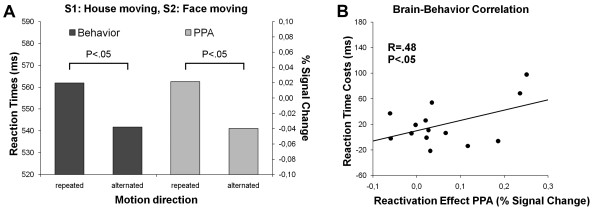Figure 2.
S1: house moving, S2: face moving. (A) Average reaction times and percent fMRI signal change in the PPA as a function of motion direction (repeated vs alternated) for trials in which a house moved in S1 and a face in S2 (i.e., alternation of moving object). Consistent with our predictions, reaction times and activity in the PPA were significantly increased when motion direction was repeated. (B) There was a significant correlation across participants between the reaction time costs and the PPA reactivation effect associated with the repetition of motion direction (in the context of an alternation of moving object).

